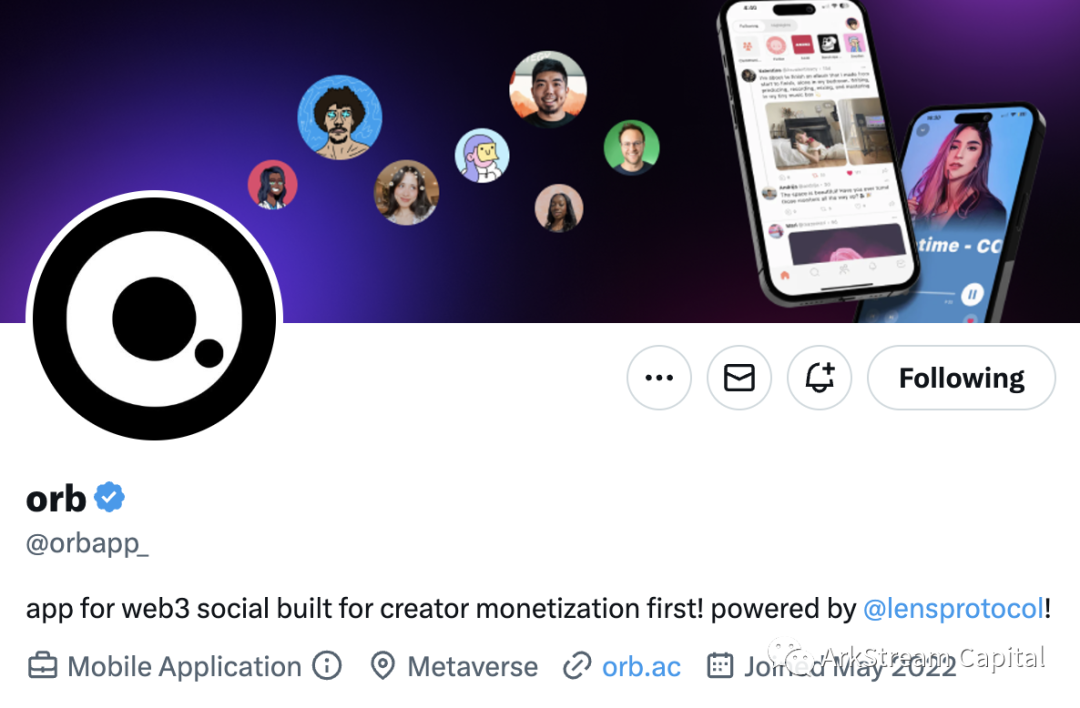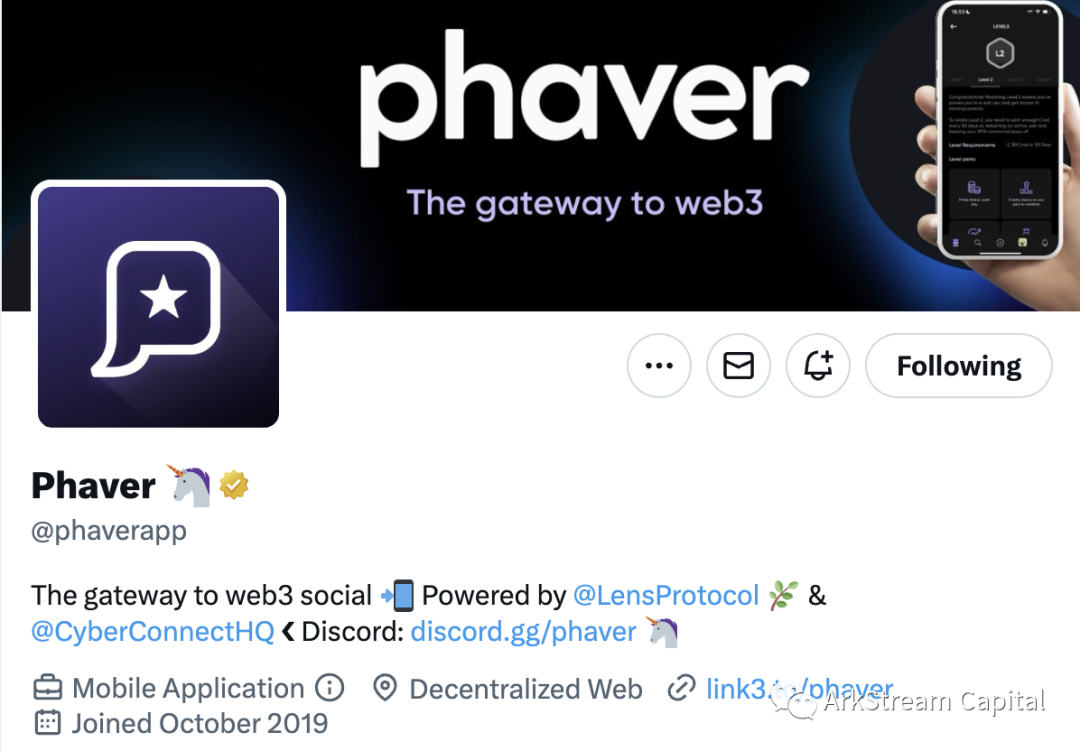Friend.tech is gaining momentum alongside Telegram, how will the veteran social protocol Lens Protocol counterattack?
Friend.tech is gaining momentum with Telegram, how will Lens Protocol, the veteran social protocol, counterattack?After the Ethereum Community Conference (ETHCC), Lens Protocol made headlines with the announcement of its latest upgrade, Lens V2. This highly anticipated release includes two revolutionary upgrades. The first upgrade is “Open Actions,” which introduces a groundbreaking feature that allows users and developers to seamlessly integrate external smart contract actions into Lens publications. The second enhancement is a significant integration with ERC6551, which allows users to bind all account activities within the Lens ecosystem by using NFTs as their unique identities, completely changing the way identity management works. Now, multiple wallet addresses can be associated with a single NFT, simplifying the user experience.
-Lens and its Competitors
Lens Protocol has established itself as a leading SocialFi platform on Ethereum. Compared to competitors, Lens has shown outstanding growth and user engagement. A social contract with a similar social graph concept, Fracaster, currently has 17,286 active accounts, while Lens Protocol has an astonishing 119,241 active accounts, clearly surpassing its competitors.
Although another competitor, Cyberconnect, has over 296,342 accounts, Lens Protocol has implemented access control measures, making a direct comparison less meaningful. Despite having a larger user base, Lens Protocol performs exceptionally well in terms of total transaction volume, with a total of 21,931,943 transactions, compared to Cyberconnect’s 16,249,274 transactions.
Lens Protocol’s ecosystem not only attracts a larger user base but also exhibits higher levels of user activity compared to other social contract platforms, reflecting the effectiveness of Lens Protocol in creating a vibrant and thriving community within its decentralized ecosystem. However, Lens Protocol is not satisfied with the current state and continues to upgrade to the next stage.
- Overview of International Cryptocurrency Regulatory Agencies
- What do legal experts think of the SBF trial?
- FTX Reappearance? JPEX Embezzles User Assets and Is Involved in a High-Value Fraud Case
-Ambitious Moves by Lens
1) Momoka: Lens’ L3

In April, Lens launched MOMOKA, an innovative Optimistic L3 scaling solution aimed at off-chain processing of Polygon transactions for unparalleled scalability and reduced transaction costs. Unlike the traditional Rollup process where L2 sends transactions to L1, Momoka takes a different approach. It creates transactions and retrieves signatures from wallets, but instead of directly broadcasting these transactions on the blockchain, it utilizes transaction signatures and typed data to generate Data Availability (DA) metadata, treating it as the transaction itself. This metadata transaction is then sent to a dedicated DA layer.
In addition, Momoka provides indexing support, allowing node operators to seamlessly stream and index Lens data without relying on third-party infrastructure. The launch of Momoka enables users to selectively store data on Polygon without the need for powerful, untrusted execution layers, and publications can choose not to use the EVM state. As a result, Momoka offers users the flexibility to customize their transaction approach based on their specific needs within the Lens ecosystem. The launch of Momoka provides users with the possibility of reducing dependence on Polygon services to some extent, potentially leading Lens to turn towards Layer 1 chains and become part of a modular blockchain approach.
2) Integration with ERC6551
ERC6551 allows for the creation of Token Bound Accounts (TBA) for NFTs, which means that NFTs can function as wallet addresses or on-chain accounts, truly realizing the functionality of NFTs as wallets. In addition, ERC-6551 will support the creation of smart contract wallet accounts for current ERC-721 NFTs, using NFTs as on-chain identity wallets. Under this NFT account, multiple wallet addresses, held NFTs, and ERC-20 tokens can be included, making NFTs a true representation of on-chain identity accounts.
From the perspective of Lens, integrating with ERC-6551 and establishing rules for using Lens NFTs is a strategic move. Currently, Lens requires users to own Lens NFTs to access its services, and trading Lens NFTs will result in the loss of all associated account activities and transactions. By implementing ERC-6551, Lens simplifies the use of its NFTs and adds an element of identity, creating a sense of belonging for users.
Lens believes that the current integration with ERC-6551 not only simplifies the use of NFTs but also introduces the concept of identity, enhancing the overall user experience. This innovative approach of integrating identity into NFTs creates a deeper connection between users and the platform.
In Lens’ closed beta version, users have already created and accumulated over 3.4 million NFTs, which are not just simple profile pictures or digital assets. Now, these NFTs have the potential to have new applications in the field of identity, providing a fresh and exciting perspective that may generate interest in the market.
– Star Projects of the Lens Protocol
Currently, there are over 134 verified and showcased applications thriving in the Lens ecosystem. This diverse range of successful applications has garnered great interest and support from various communities and developers, and there is high anticipation for the future of the Lens Protocol.
1) Orb

Orb is a decentralized social media platform that supports both mobile and desktop. Among all applications, we believe in Orb. Orb is a decentralized social application that not only excels in UI/UX on Lens but also stands out in emphasizing community engagement. We believe that an engaging and unique community will be the most distinctive feature of Web3 social applications and will help attract Web2 users from platforms like Twitter. Orb not only focuses on attracting diverse communities from Web3 but also makes efforts in creating a unique user experience.
2) Lenster

Lenster, as an innovative and groundbreaking decentralized social media application, firmly adheres to the principles of permissionless interaction. With the strong support of the Lens Protocol, Lenster redefines the digital social sphere by introducing a brand new user participation paradigm. On this innovative platform, users have an unprecedented ability to create and be rewarded for posts that deeply resonate with the larger community.
3) Phaver

Phaver is a pioneer in the decentralized social media platform field, utilizing the cutting-edge capabilities of Lens technology. As an early adopter of this revolutionary paradigm, Phaver not only redefines the way users interact with digital communities, but also introduces innovative incentive dimensions through its unique reward token system.
– Limitations of the Lens Protocol
The submitter is responsible for verifying transaction data and constructing data submissions to Arweave, similar to an L2 sequencer. However, it is not decentralized, and the decision-making power of the submitter belongs to the Lens official team.
Lens chose not to follow traditional L2 solutions but instead rolled up and sent data to the DA layer. This decision was made because as a large-scale application, Lens data will continue to grow and become complex, unlike financial data that only requires the final result. Sending data to the DA layer is a temporary solution handled by Arweave and is not a long-term scaling solution.
Although Lens is considered one of the most mature protocols with a thriving ecosystem and a dedicated team committed to building and improving user experience, it currently mainly attracts blockchain users. Lens struggles to attract new users. However, some non-blockchain social contracts have successfully attracted a large number of new users through low entry barriers and smooth user experience.

In conclusion, the Lens protocol stands out in competition with its inherent technological advantages, rooted in a steadfast commitment to decentralization. While well-known social protocols like Nostr and Mastodon have accumulated a large number of users without relying on blockchain technology, the uniqueness of the Lens protocol lies in its genuine support for decentralization. Nostr’s case emphasizes the importance of decentralized architecture, eliminating the need for users to deal with complex blockchain concepts. Nostr’s elegant system, including clients and relays, provides users with an environment for easy access to private and public keys, creating conditions for scalability and the creation of diverse applications.

However, the recent wave of innovation created by visionary leaders such as Vitalik and Elon on Twitter may reshape the preferences of local Web3 users and prompt them to explore alternative promising social protocols. In this ever-changing landscape, the Lens protocol faces the challenge of how to maintain its relevance and attractiveness in a highly competitive environment.
We look forward to witnessing Lens standing out in the fiercely competitive social track!
We will continue to update Blocking; if you have any questions or suggestions, please contact us!
Was this article helpful?
93 out of 132 found this helpful
Related articles
- Behind the Balancer attack incident In addition to the downsizing of the security team, we should pay more attention to the hidden concerns of centralized front-ends.
- Where are the criminal risks of crypto market makers?
- Telegram against MetaMask It is not only a battle for Web3 traffic entrance, but also a battle between Web2 and native encryption.
- SubDAO Divide and Conquer, a key step in the endgame of MakerDAO
- LianGuai Daily | JPEX involved amount has reached HKD 1.2 billion; Cryptocurrency startup Bastion completes $25 million financing.
- How did North Korean hackers use LinkedIn and social engineering to steal $3.4 billion in cryptocurrency?
- Exclusive Interview with Wintermute Co-founder Accumulated Trading Volume of 20 Trillion USD in 6 Years, the Secret to Success of a Well-known Market Maker






